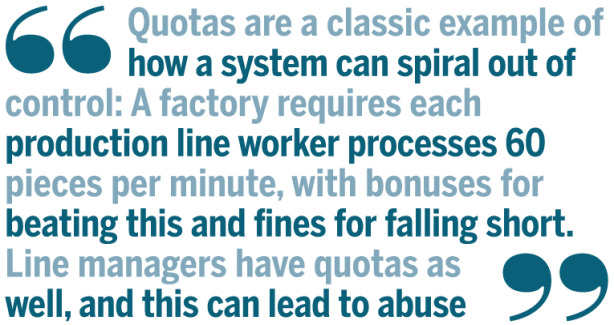Made in China: Tech, Ethics and Economics
September 1, 2010 | 07:28

The secret world of Chinese factories
While the suicides at Hon Hai's factories drew the most media attention - understandably, given the violent, dramatic nature of the act and the company's links to Apple - these aren't events happening in a vacuum. This year has seen disgruntled workers going on strike over wage demands at a string of other factories in China, for instance.It's easy to make generalizations about factory life in China, but difficult to tie them to specifics: the sector is so vast and varied in terms of geography and the products being made. There's often also minimal transparency in the supply chain. “Things have happened behind a veil of secrecy. Without a more thorough audit of Foxconn and other factories we can’t say what the root cause of worker dissatisfaction is. We don’t know enough to make a decision about whether the wage hike will make a difference,” said Alexandra Harney, author of The China Price: The True Cost of Chinese Competitive Advantage, which examines the country’s manufacturing sector.
“Foxconn is much larger than every other manufacturer and that allows it certain privileges. It also necessitates much more sophisticated management techniques. It’s difficult to say whether or not it has these without doing a more precise examination inside the factory. Greater transparency is in everyone’s interests.”

Take the death of 19 year old Ma Xiangqian, who, police concluded, leapt to his death from a high floor of his building on January 23. It had been reported that he'd been working 11-hour night shifts, seven days a week on the production line since joining Hon Hai last November, his relatives said. Ma fell out with his supervisor in December and was reassigned to toilet cleaning duties. His pay stub was said to have showed that he worked 286 hours in the month before he died, including 112 hours of overtime, about three times the legal limit.
Hon Hai said Ma hadn’t come to work since January 20 and offered a US$73,000 reward for information relating to his death. The company denied the toilet-cleaning claim, adding that an internal investigation found no evidence of mistreatment.
The suicides that came after Ma’s followed a similar pattern: workers in their late teens or early twenties, jumping from dormitory buildings. Families came forward with claims concerning the working conditions at Hon Hai, as have other former employees. In Ma’s case as in others, the company has negotiated settlements with families.
Despite the veil of secrecy surrounding Hon Hai, it's possible to draw upon knowledge of the manufacturing sector in Shenzhen as a whole and assess how workplace-related factors might have contributed to the tragedies.
“They are working multi shifts fairly constantly and without much rest – it’s not uncommon in that level of factory. The production line is moving very fast and people are expected to keep up a very rapid pace of work,” said one factory manager who asked not to be named.
Quotas are a classic example of how the system can spiral out of control: A factory requires that each production line worker processes 60 pieces per minute, with bonuses on offer for beating these targets and fines imposed for falling short. Often line managers have quotas to meet as well, and this can lead to worker abuses.
However, the same factory manager urges caution against misinterpreting the situation at Hon Hai. First of all, the suicides should be placed in context and compared against suicides in years past, as well as those at other factories in the region. Second, if there has been a spike in suicides, why did it begin in Spring 2010? The ongoing drive for greater efficiencies aside, has Hon Hai’s approach to management become stricter or altered in any way?
One possible explanation – though virtually impossible to verify – is that recent labour shortages may have forced factories to hire people who would have been disregarded in normal circumstances, perhaps because of perceived mental frailty. Either way, the sheer number of Hon Hai workers means it is difficult to carry out sufficient assessments. “If you have 400,000 [workers] and a high turnover you don’t know what kind of person is coming through the door and how they will react to the pressure,” the factory manager added.
These challenges are not Hon Hai’s alone. Reflecting on an employee suicide in March 2008 at Huawei Technologies, a telecom equipment manufacturer headquartered in Shenzhen, Hong Kong-based China Labour Bulletin said it took the number of deaths by suicide or in mysterious circumstances at the company to six in two years.
But Hon Hai and Huawei are both large, high-profile companies. While the suicides point to a wider problem in China’s factories as a whole, one of the most disconcerting elements is that a company of Hon Hai's size was accused at all; generally, it is the small, low-level, low profit-margin operators that are seen as the main offenders.

MSI MPG Velox 100R Chassis Review
October 14 2021 | 15:04








Want to comment? Please log in.